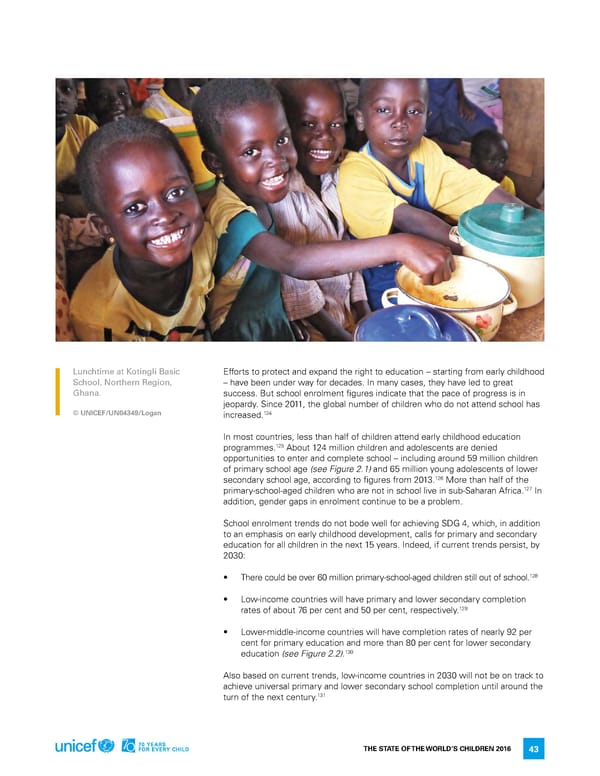Lunchtime at Kotingli Basic efforts to protect and expand the right to education – starting from early childhood School, Northern Region, – have been under way for decades. in many cases, they have led to great Ghana. success. But school enrolment figures indicate that the pace of progress is in jeopardy. Since 2011, the global number of children who do not attend school has © UNICEF/UN04349/Logan 124 increased. in most countries, less than half of children attend early childhood education 125 programmes. about 124 million children and adolescents are denied opportunities to enter and complete school – including around 59 million children of primary school age (see Figure 2.1) and 65 million young adolescents of lower secondary school age, according to figures from 2013.126 More than half of the 127 primary-school-aged children who are not in school live in sub-Saharan africa. in addition, gender gaps in enrolment continue to be a problem. School enrolment trends do not bode well for achieving SdG 4, which, in addition to an emphasis on early childhood development, calls for primary and secondary education for all children in the next 15 years. indeed, if current trends persist, by 2030: 128 • There could be over 60 million primary-school-aged children still out of school. • low-income countries will have primary and lower secondary completion rates of about 76 per cent and 50 per cent, respectively.129 • lower-middle-income countries will have completion rates of nearly 92 per cent for primary education and more than 80 per cent for lower secondary education (see Figure 2.2).130 also based on current trends, low-income countries in 2030 will not be on track to achieve universal primary and lower secondary school completion until around the turn of the next century.131 The STaTe of The World’S Children 2016 43
 70 Years for Every Child Page 58 Page 60
70 Years for Every Child Page 58 Page 60